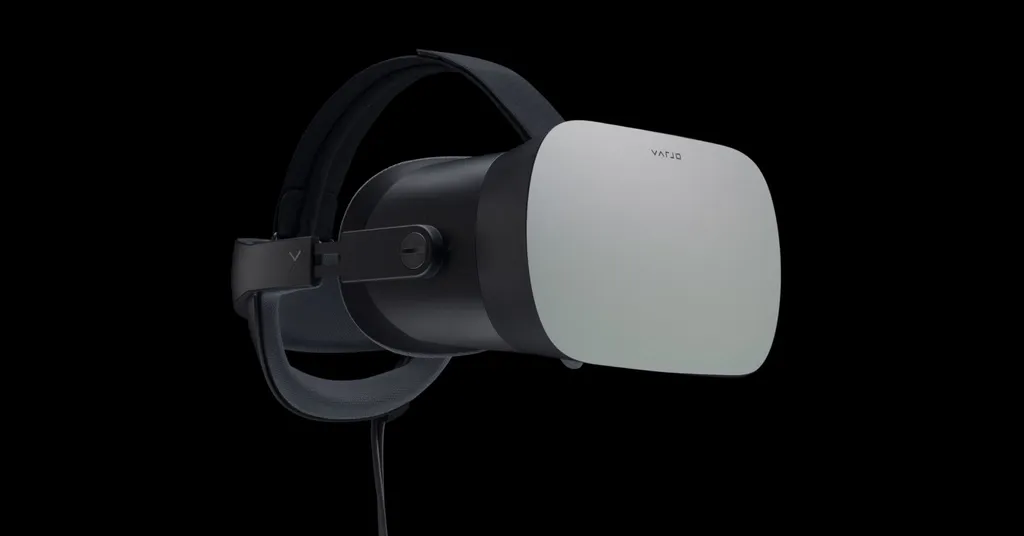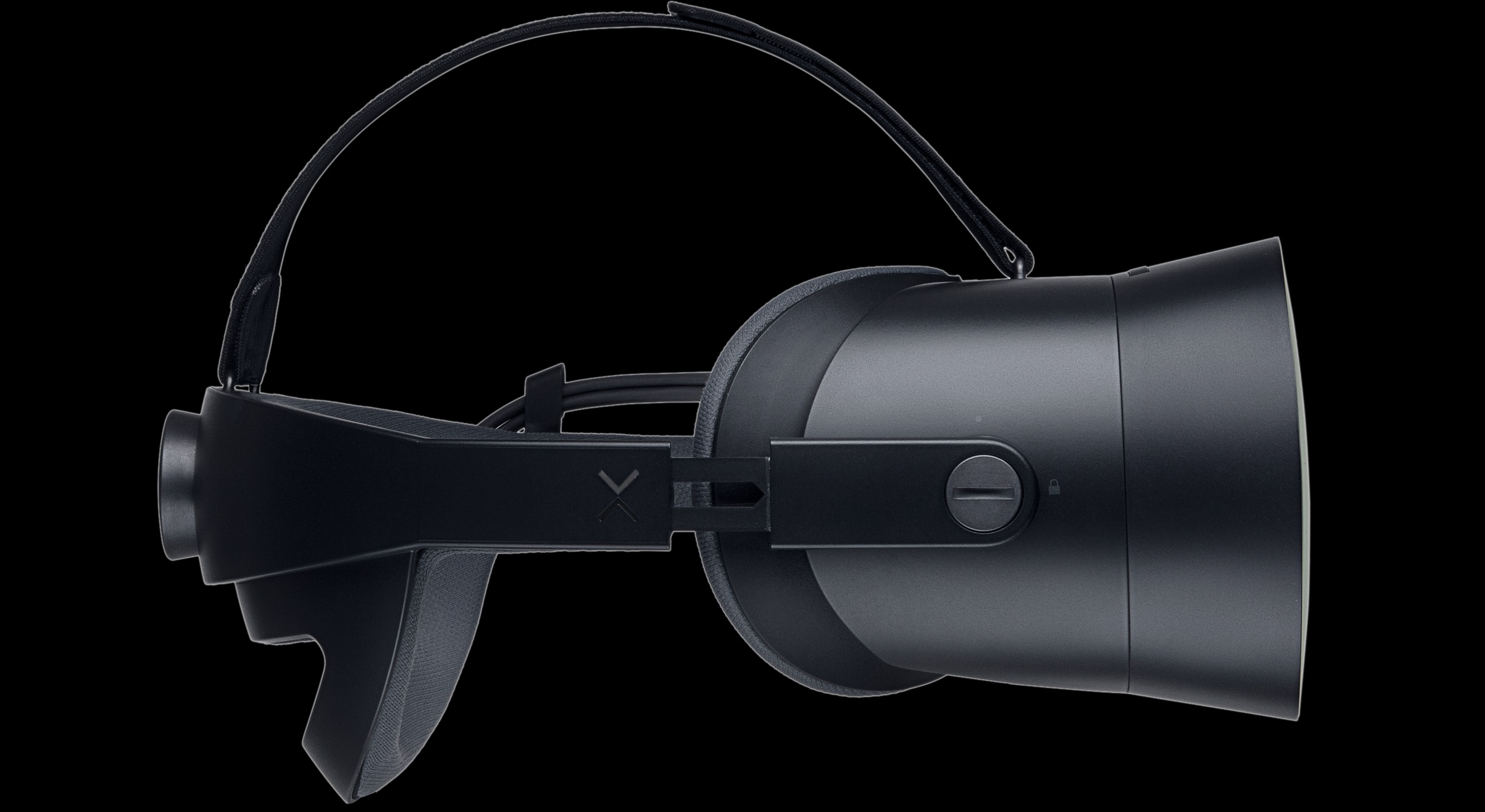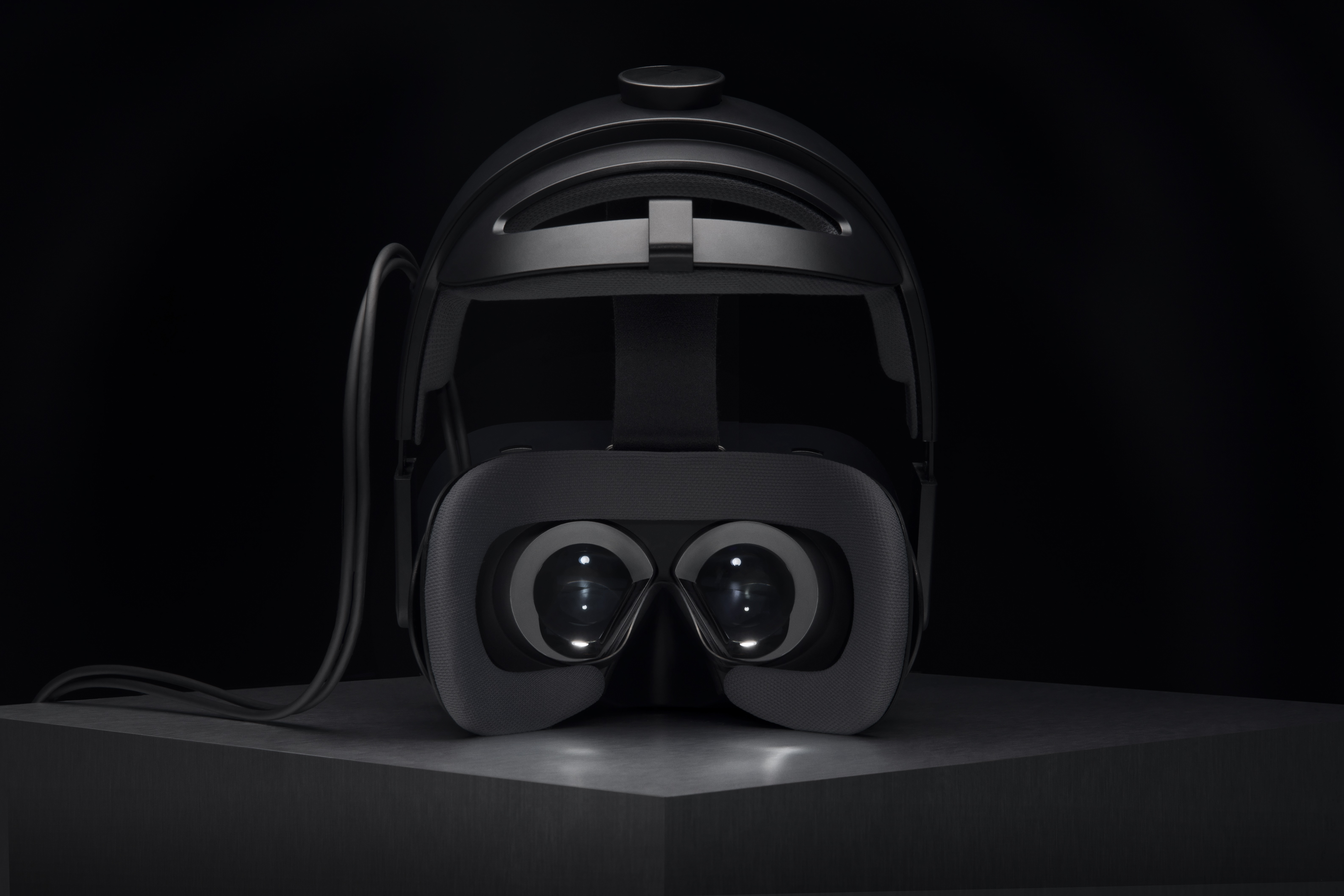When Michael Abrash told a 2015 F8 audience VR needed a 16K display for “retinal resolution”, I knew it would be decades before headsets became as clear as day. Just four years on, Finland-based Varjo gave me a tiny window into that future with the VR-1. And I loved what I saw.
We already wrote about Varjo last week, but when I heard it was at MWC I couldn’t resist seeking it out. It’s an expensive enterprise-level headset that claims to reach “human eye resolution”. I’d say that description is a little on the generous side, but it is close enough to trick an untrained eye at least.
In our preview last week we wrote about the VR-1’s two displays. A “Context Screen” takes up the sides of the optics, described to me by Varjo CEO Niko Eiden as “a bit better” than the Vive Pro’s screen. The “Focus Screen” is the main attraction, though. It’s the circular center of the optics, operating at a much higher resolution. The size of the screen was comparable to holding a tennis ball at arm’s length away from you.
The three scenes captured via photogrammetry stunned me the most.
One captured what looked like a Japanese graveyard; rustic, symmetrical ancient stones sitting among lush, green vegetation. The coarse surface of the stones was strikingly apparent, to the point I could see the bumps and depressions. The grass beneath my feet was vibrant and sharp, enough to trigger the splendor of a summer’s day. I focused in particular on one clump of grass toward my right foot. Some areas — apparent capture errors — appeared blurred and stretched. By comparison, the areas captured correctly looked like real life.
I was just as mesmerized by the capture of an artist studio in the last demo. The detail was staggering. I focused on flecks of paint which wouldn’t catch my eye in a normal headset. I could even read the spines of CD cases on a shelf maybe a half meter away from me. Every time I turned my head I would, for a fraction of a second, believe what I was seeing in front of me.
Finally, I saw the airport demo we described in our last preview. This gave me a look at VR-1’s eye-tracking. I found it to be responsive and accurate. Given that the two parts of the VR-1’s display are so different, there’s no foveated rendering here.
The VR-1 always wows at first sight, offering a precious few moments in which images look clear as day before the eyes refocus. I could only spot an incredibly fine and faint set of lines on the Focus Display by focusing on it. They don’t distract at all. What is obvious, though, is the contrast between Focus and Context screens. Moving my head to place an object along the line between Focus and Context screens shows how far consumer VR has to go. I was constantly aware of the Context Screen as I used the kit. It was a strange sort of tunnel vision within tunnel vision effect. Tiling the Focus Screen’s resolution across the entire display would add cost to the system.
There was a time that Varjo had planned to combat this system by moving the high-resolution area to where the user is looking. It’s why Varjo has already developed its own eye-tracking. In a follow-up email, Eiden explained that this idea wasn’t going to make it into VR-1. “Our initial idea was to tilt our combiner mirror mechanically to achieve this, but it turned out to be mechanically complicated and we had quite a few concerns about reliability and time to market, which both are super important for a startup with limited funding and resources,” he wrote. “I’m really happy about our decision to go solid state with VR-1, as even with a non-moving setup we can bring new advantages to the market. On the foveating display side we are continuing our research, as we have a few new ideas how it could be accomplished with a simpler set-up.”
As far as VR-1’s fit and weight, the headset didn’t seem as ergonomically pleasing as, say, the Rift or PSVR. It is heavier with good reason and the material against my face felt stiff and rigid. I felt as if it might irritate after prolonged use, though the VR-1 isn’t necessarily designed for that.
I was also interested to hear Eiden’s thoughts on wider input. Varjo’s demo didn’t have any form of physical controller. Eiden told me that the company sees current solutions like the Touch controllers as very game-centric. Varjo wants to make something with professional use in mind. If that means potential VR-1 controllers make the same strides over consumer headsets as the device itself does, we’ll be very interested to see that work.
Varjo will be shipping out to its first customers later this year. Starting just south of $6,000, it is a tall order for even the prosumer market.































